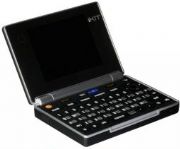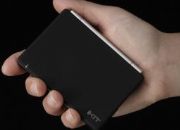Since 2005,
Oracle Corp. has spent at least $32 billion on
acquisitions — turning itself into the vendor of a top-to-bottom enterprise software stack that is arguably broader in scope than any rival suite.
In doing so, Oracle hasn't diluted its database focus. Sales of databases and middleware still account for more than half of its revenue. And according to consulting firm Gartner Inc., Oracle controlled 49% of the global database market last year, with more revenue than the next four vendors — IBM, Microsoft, Teradata and Sybase — combined.
But Oracle has shown some signs of vulnerability at the high end of the database market. For instance, many Web 2.0 companies are eschewing its databases and instead running open-source technologies such as MySQL on grids of PC servers. And corporate users with data warehouses sized in the hundreds of terabytes, or even in the petabyte range, are finding column-oriented databases and specially tuned data warehousing appliances to be more scalable than Oracle databases are.
So Oracle's annual OpenWorld conference in San Francisco two weeks ago was heavy on database news, as the company tried to show that it is agile enough — and its software is robust enough — to respond to the new challengers.
At the top of the list was Oracle's announcement of a pair of hardware products — its first ever — aimed at users looking to get ultrafast performance out of their ultralarge databases.
For the past six months, Oracle CEO Larry Ellison had teased users and analysts with hints that the vendor would introduce a "database accelerator" at OpenWorld. That turned out to be the Exadata Storage Server, which combines Oracle's parallel query software with ProLiant servers from development partner Hewlett-Packard Co.
What makes the Exadata system different from a typical storage server, according to Oracle, is the database intelligence built into the device. Ellison claimed that Exadata can speed up large queries by performing lower-level calculations on the information it stores and then sending the results to the main database, instead of flooding it with raw data.
The other new product, the industrial-sounding HP Oracle Database Machine, is a self-contained system designed to match up against integrated data warehousing appliances from vendors such as Teradata and Netezza Inc.
The Database Machine combines eight regular database servers running Oracle Database 11g with 14 Exadata systems that have a total storage capacity of 168TB and InfiniBand connections offering 14GB/sec. of aggregate data bandwidth.
That all costs a mere $2.33 million — for existing customers that have enterprise or unlimited Oracle database licenses. New customers would have to pony up for licenses for the eight database servers; based on the configuration recommended in an Oracle white paper, that would cost an additional $3.22 million, analysts said.
Even so, Christo Kutrovsky, a database administrator at The Pythian Group Inc., an Ottawa-based company that manages databases for corporate clients, said he thinks the Database Machine could be worth the steep cost if the alternative is having the IT department try to assemble a similar system itself.
"Ninety percent of the problems I've seen are due to improperly configured systems," Kutrovsky wrote in Pythian's corporate blog. Installing the Database Machine eliminates that issue by making configuration errors "impossible," he said.
According to Oracle, customers that tested production workloads on a half-size Database Machine said queries ran 10 to 72 times faster than they did on other systems. Those early users include the Chicago Mercantile Exchange, supermarket chain Giant Eagle and LGR Telecommunications, which develops data warehousing systems for telecommunications carriers.
In a blog post, Forrester Research Inc. analyst James Kobielus described the introduction of the Database Machine and Exadata as "a bold move into petabyte scale-out territory — an emerging, very-high-end niche in which one veteran vendor, Teradata, has been preeminent."
Kobielus also noted that Oracle's storage layer is transparent to applications, meaning they don't need to be rewritten in order for users to see performance gains on the new systems.
 IMOVIO launched today a smaller alternative to a subnotebook -- much smaller. The new iKIT is about the size of a PDA from ten years ago, but has a QWERTY keyboard and connects to the Internet at 3G speeds via your cell phone or Wi-Fi.
IMOVIO launched today a smaller alternative to a subnotebook -- much smaller. The new iKIT is about the size of a PDA from ten years ago, but has a QWERTY keyboard and connects to the Internet at 3G speeds via your cell phone or Wi-Fi.  The company is currently pitching it to mobile network operators and retail stores.
The company is currently pitching it to mobile network operators and retail stores. 

